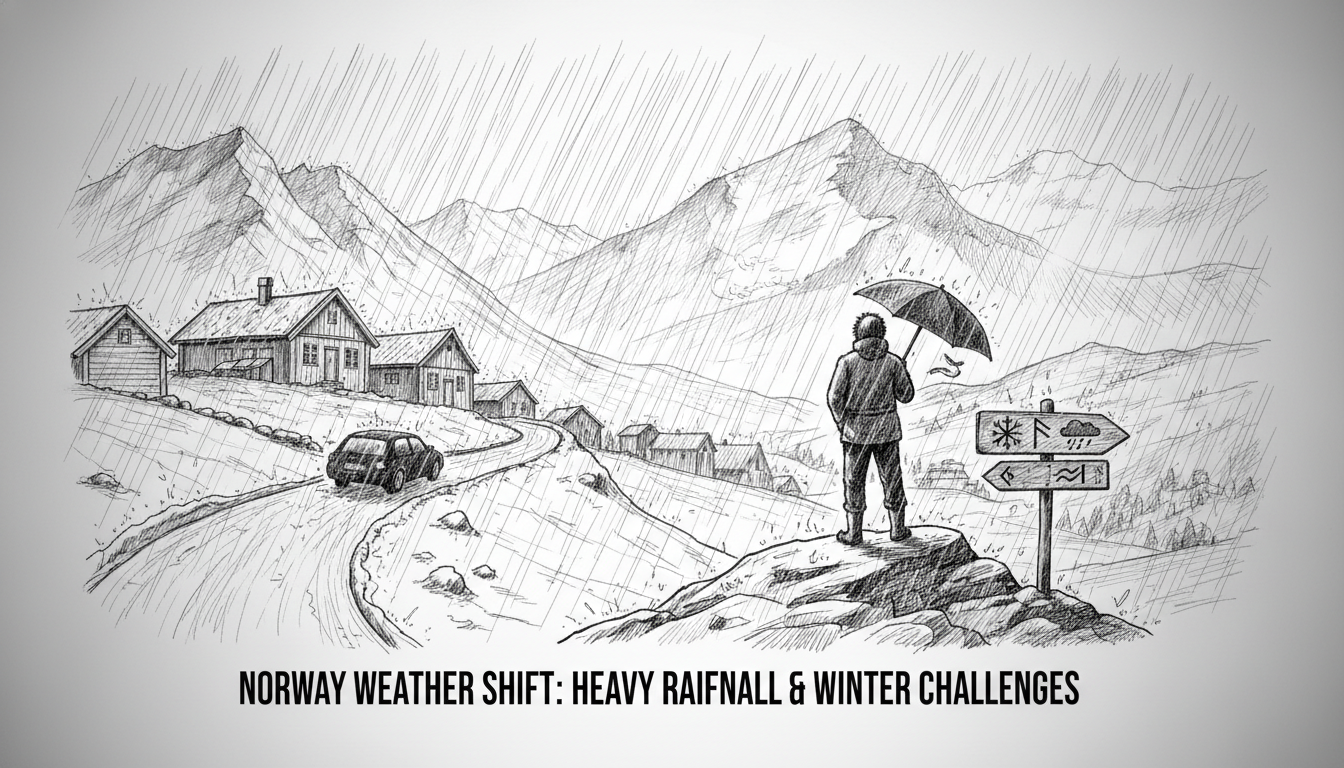Norwegian weather patterns are shifting dramatically this week. The recent weekend rainfall is now decreasing across the country. Cooler weather conditions will dominate for several days before another major change arrives.
Meteorologists report Northern Norway will experience winter conditions with snow showers and low temperatures. Nordland county may see sleet and challenging driving conditions. Temperature fluctuations between freezing and thawing create dangerous road situations.
From Thursday, southern winds will reach northern regions creating weather uncertainty. Mild temperatures and substantial rainfall will return to Southern Norway. The forecast shows consistent precipitation through late November and early December.
Meteorological officials describe the winter outlook as unpromising for snow lovers. Southern Norway residents must travel to mountain areas to find snow coverage. Snow line levels remain uncertain despite current predictions.
This November will likely end milder than seasonal averages. The month began with unusually warm temperatures that have fluctuated recently. Northern Norway has already recorded temperatures dropping to minus thirty degrees Celsius.
Road safety concerns are increasing with the changing conditions. Icy roads become likely when temperatures alternate around freezing points. Transportation officials warn drivers to prepare for challenging travel conditions.
Norwegian infrastructure faces annual tests during these transitional weather periods. The country's mountainous terrain creates microclimates that complicate forecasting. Coastal regions experience different patterns than inland valleys and fjord areas.
Climate researchers note changing precipitation patterns in recent decades. Southern Norway now receives more rainfall during traditional winter months. Northern regions maintain colder conditions but with variable snow accumulation.
Tourism operators monitor these developments closely. Winter sports destinations require reliable snow conditions for seasonal businesses. The uncertainty affects planning for holiday visitors and local celebrations.
Energy consumption patterns also shift with temperature changes. Heating demand increases substantially during cold snaps. Hydropower resources benefit from precipitation but face freezing challenges.
The meteorological service continues updating forecasts as conditions evolve. They emphasize that December remains distant enough for potential snow developments. Northern residents have better chances for white Christmas conditions than southern counterparts.
Weather variability has become more pronounced in recent years. This creates challenges for agriculture, transportation, and daily life planning. The current patterns reflect broader climate trends affecting the Nordic region.
Emergency services prepare for increased weather-related incidents during transitional periods. They recommend winter tire installation and emergency kits in vehicles. Homeowners should check heating systems and insulation before deep winter arrives.
The coming weeks will determine whether Norway experiences traditional winter conditions or continues milder trends. Meteorological data collection stations across the country provide continuous updates. These help officials and citizens make informed decisions about weather preparedness.

